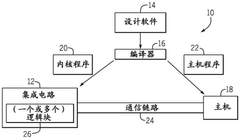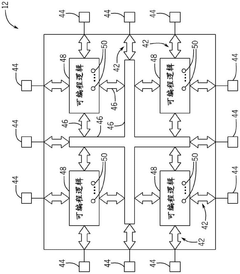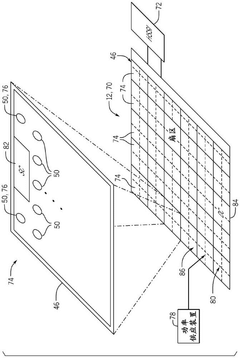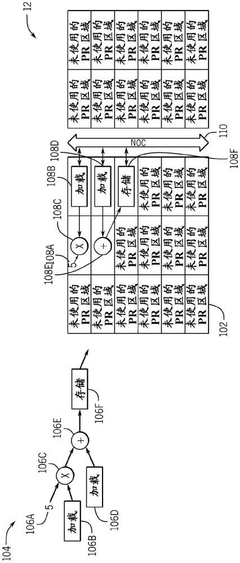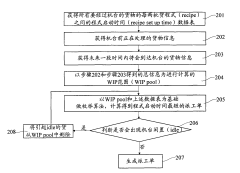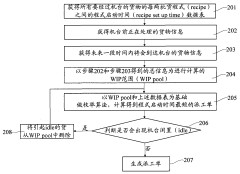How to Reduce Production Time with Accura 25?
JUL 8, 20259 MIN READ
Generate Your Research Report Instantly with AI Agent
Patsnap Eureka helps you evaluate technical feasibility & market potential.
Accura 25 Background and Objectives
Accura 25 is a revolutionary rapid prototyping material developed by 3D Systems, designed to significantly reduce production time in additive manufacturing processes. This material has gained considerable attention in the industry due to its unique properties and potential to transform manufacturing workflows.
The development of Accura 25 can be traced back to the early 2000s when 3D Systems recognized the need for faster and more efficient prototyping materials. Traditional rapid prototyping materials often required lengthy post-processing times, which hindered overall production efficiency. Accura 25 was conceived as a solution to address these limitations and streamline the manufacturing process.
As the additive manufacturing industry evolved, the demand for materials that could reduce production time without compromising quality became increasingly apparent. Accura 25 emerged as a response to this market need, offering a balance between speed, accuracy, and durability. Its development was driven by the growing adoption of 3D printing technologies across various sectors, including automotive, aerospace, and consumer goods.
The primary objective of Accura 25 is to minimize production time while maintaining high-quality output. This material aims to achieve faster build speeds, reduced post-processing requirements, and improved overall efficiency in the manufacturing workflow. By addressing these key aspects, Accura 25 seeks to enable manufacturers to accelerate their product development cycles and bring innovations to market more rapidly.
One of the key technological trends that influenced the development of Accura 25 is the push towards Industry 4.0 and smart manufacturing. As companies strive for greater automation and integration in their production processes, materials like Accura 25 play a crucial role in enabling faster, more flexible manufacturing capabilities.
The evolution of Accura 25 also aligns with the broader trend of sustainable manufacturing. By reducing production time and minimizing material waste, this advanced resin contributes to more environmentally friendly manufacturing practices. This aspect is particularly relevant as industries face increasing pressure to adopt greener technologies and reduce their carbon footprint.
Looking ahead, the future development of Accura 25 and similar materials is likely to focus on further enhancing speed and efficiency while expanding the range of applications. Researchers and engineers are exploring ways to optimize the material's properties, potentially incorporating advanced features such as self-healing capabilities or enhanced thermal resistance to broaden its use in more demanding industrial applications.
The development of Accura 25 can be traced back to the early 2000s when 3D Systems recognized the need for faster and more efficient prototyping materials. Traditional rapid prototyping materials often required lengthy post-processing times, which hindered overall production efficiency. Accura 25 was conceived as a solution to address these limitations and streamline the manufacturing process.
As the additive manufacturing industry evolved, the demand for materials that could reduce production time without compromising quality became increasingly apparent. Accura 25 emerged as a response to this market need, offering a balance between speed, accuracy, and durability. Its development was driven by the growing adoption of 3D printing technologies across various sectors, including automotive, aerospace, and consumer goods.
The primary objective of Accura 25 is to minimize production time while maintaining high-quality output. This material aims to achieve faster build speeds, reduced post-processing requirements, and improved overall efficiency in the manufacturing workflow. By addressing these key aspects, Accura 25 seeks to enable manufacturers to accelerate their product development cycles and bring innovations to market more rapidly.
One of the key technological trends that influenced the development of Accura 25 is the push towards Industry 4.0 and smart manufacturing. As companies strive for greater automation and integration in their production processes, materials like Accura 25 play a crucial role in enabling faster, more flexible manufacturing capabilities.
The evolution of Accura 25 also aligns with the broader trend of sustainable manufacturing. By reducing production time and minimizing material waste, this advanced resin contributes to more environmentally friendly manufacturing practices. This aspect is particularly relevant as industries face increasing pressure to adopt greener technologies and reduce their carbon footprint.
Looking ahead, the future development of Accura 25 and similar materials is likely to focus on further enhancing speed and efficiency while expanding the range of applications. Researchers and engineers are exploring ways to optimize the material's properties, potentially incorporating advanced features such as self-healing capabilities or enhanced thermal resistance to broaden its use in more demanding industrial applications.
Market Demand for Rapid Production
The market demand for rapid production solutions has been steadily increasing across various industries, driven by the need for faster time-to-market, cost reduction, and improved product customization. Accura 25, a high-performance stereolithography resin, has emerged as a key player in addressing these demands, particularly in the field of additive manufacturing and rapid prototyping.
In the automotive sector, manufacturers are constantly seeking ways to accelerate their product development cycles. Accura 25 has gained significant traction in this industry due to its ability to produce durable, high-resolution parts with excellent surface finish. This has led to a growing demand for Accura 25 in the production of functional prototypes, tooling, and even end-use parts for low-volume production runs.
The aerospace industry has also shown a strong interest in rapid production technologies utilizing Accura 25. With its high heat deflection temperature and resistance to humidity, Accura 25 is well-suited for creating complex, lightweight components that meet the stringent requirements of aerospace applications. This has resulted in an increased adoption of Accura 25 for producing wind tunnel models, interior cabin components, and tooling for composite layup processes.
In the consumer electronics market, where product lifecycles are becoming increasingly shorter, Accura 25 has found applications in rapid prototyping and small-scale production of device enclosures, connectors, and other intricate components. The material's ability to produce parts with fine details and smooth surfaces has made it particularly attractive for companies looking to quickly iterate and validate designs before mass production.
The medical device industry has also recognized the potential of Accura 25 in rapid production scenarios. The material's biocompatibility and sterilizability make it suitable for producing surgical guides, anatomical models, and even custom medical devices. This has led to a growing demand from healthcare providers and medical device manufacturers seeking to reduce lead times and improve patient-specific solutions.
As sustainability becomes an increasingly important factor in manufacturing, Accura 25's potential for reducing material waste and energy consumption compared to traditional manufacturing methods has further boosted its market appeal. Companies across industries are recognizing the environmental benefits of adopting rapid production technologies that utilize materials like Accura 25.
The global market for rapid production technologies and materials is expected to continue its growth trajectory, with some analysts projecting a compound annual growth rate of over 20% in the coming years. This growth is largely attributed to the increasing adoption of additive manufacturing technologies and the development of advanced materials like Accura 25 that enable faster, more efficient production processes.
In the automotive sector, manufacturers are constantly seeking ways to accelerate their product development cycles. Accura 25 has gained significant traction in this industry due to its ability to produce durable, high-resolution parts with excellent surface finish. This has led to a growing demand for Accura 25 in the production of functional prototypes, tooling, and even end-use parts for low-volume production runs.
The aerospace industry has also shown a strong interest in rapid production technologies utilizing Accura 25. With its high heat deflection temperature and resistance to humidity, Accura 25 is well-suited for creating complex, lightweight components that meet the stringent requirements of aerospace applications. This has resulted in an increased adoption of Accura 25 for producing wind tunnel models, interior cabin components, and tooling for composite layup processes.
In the consumer electronics market, where product lifecycles are becoming increasingly shorter, Accura 25 has found applications in rapid prototyping and small-scale production of device enclosures, connectors, and other intricate components. The material's ability to produce parts with fine details and smooth surfaces has made it particularly attractive for companies looking to quickly iterate and validate designs before mass production.
The medical device industry has also recognized the potential of Accura 25 in rapid production scenarios. The material's biocompatibility and sterilizability make it suitable for producing surgical guides, anatomical models, and even custom medical devices. This has led to a growing demand from healthcare providers and medical device manufacturers seeking to reduce lead times and improve patient-specific solutions.
As sustainability becomes an increasingly important factor in manufacturing, Accura 25's potential for reducing material waste and energy consumption compared to traditional manufacturing methods has further boosted its market appeal. Companies across industries are recognizing the environmental benefits of adopting rapid production technologies that utilize materials like Accura 25.
The global market for rapid production technologies and materials is expected to continue its growth trajectory, with some analysts projecting a compound annual growth rate of over 20% in the coming years. This growth is largely attributed to the increasing adoption of additive manufacturing technologies and the development of advanced materials like Accura 25 that enable faster, more efficient production processes.
Current Challenges in Accura 25 Usage
Accura 25, a widely used stereolithography resin in additive manufacturing, faces several challenges that impact production time and efficiency. One of the primary issues is the material's relatively slow curing rate, which extends the overall printing process. This limitation becomes particularly evident when producing large or complex parts, as each layer requires a specific exposure time to solidify properly.
Another significant challenge is the post-processing requirements for Accura 25 parts. After printing, components often need extensive cleaning and post-curing to achieve optimal mechanical properties and surface finish. This additional step adds considerable time to the production cycle, reducing overall throughput and increasing labor costs.
The material's viscosity also presents difficulties in certain applications. Higher viscosity can lead to slower recoating times between layers, further extending the printing duration. Additionally, it may cause issues with feature resolution and surface quality, especially for intricate designs with fine details or thin walls.
Temperature sensitivity is another factor affecting Accura 25's performance. The material's properties can vary significantly with temperature fluctuations, potentially leading to inconsistencies in part quality and dimensional accuracy. Maintaining a stable printing environment becomes crucial but can be challenging and time-consuming to achieve consistently.
Warpage and shrinkage during the curing process pose additional challenges. These phenomena can result in dimensional inaccuracies and internal stresses within the printed parts, necessitating design compensations or post-processing adjustments. Such issues not only impact production time but also affect the overall quality and reliability of the final products.
The material's limited shelf life and sensitivity to light exposure create logistical challenges in storage and handling. Proper management of Accura 25 inventory requires careful planning and specialized storage conditions, adding complexity to the production workflow and potentially leading to material waste if not managed efficiently.
Lastly, the need for support structures in many Accura 25 prints adds to both material consumption and post-processing time. Removing these supports and finishing the surfaces where they were attached can be labor-intensive and time-consuming, particularly for complex geometries or large production runs.
Addressing these challenges is crucial for optimizing production time with Accura 25. Potential solutions may involve refining printing parameters, developing advanced post-processing techniques, or exploring material modifications to enhance curing speed and reduce post-processing requirements. Innovations in printer hardware, such as improved recoating mechanisms or more precise environmental controls, could also contribute to overcoming these limitations and improving overall production efficiency.
Another significant challenge is the post-processing requirements for Accura 25 parts. After printing, components often need extensive cleaning and post-curing to achieve optimal mechanical properties and surface finish. This additional step adds considerable time to the production cycle, reducing overall throughput and increasing labor costs.
The material's viscosity also presents difficulties in certain applications. Higher viscosity can lead to slower recoating times between layers, further extending the printing duration. Additionally, it may cause issues with feature resolution and surface quality, especially for intricate designs with fine details or thin walls.
Temperature sensitivity is another factor affecting Accura 25's performance. The material's properties can vary significantly with temperature fluctuations, potentially leading to inconsistencies in part quality and dimensional accuracy. Maintaining a stable printing environment becomes crucial but can be challenging and time-consuming to achieve consistently.
Warpage and shrinkage during the curing process pose additional challenges. These phenomena can result in dimensional inaccuracies and internal stresses within the printed parts, necessitating design compensations or post-processing adjustments. Such issues not only impact production time but also affect the overall quality and reliability of the final products.
The material's limited shelf life and sensitivity to light exposure create logistical challenges in storage and handling. Proper management of Accura 25 inventory requires careful planning and specialized storage conditions, adding complexity to the production workflow and potentially leading to material waste if not managed efficiently.
Lastly, the need for support structures in many Accura 25 prints adds to both material consumption and post-processing time. Removing these supports and finishing the surfaces where they were attached can be labor-intensive and time-consuming, particularly for complex geometries or large production runs.
Addressing these challenges is crucial for optimizing production time with Accura 25. Potential solutions may involve refining printing parameters, developing advanced post-processing techniques, or exploring material modifications to enhance curing speed and reduce post-processing requirements. Innovations in printer hardware, such as improved recoating mechanisms or more precise environmental controls, could also contribute to overcoming these limitations and improving overall production efficiency.
Existing Time Reduction Techniques for Accura 25
01 Production scheduling optimization
Optimization techniques are employed to improve production scheduling for Accura 25, focusing on reducing production time and increasing efficiency. These methods may involve advanced algorithms, machine learning, or AI-driven solutions to analyze and optimize various production parameters.- Production scheduling optimization: Optimization techniques are applied to improve production scheduling for Accura 25, potentially reducing production time. This involves analyzing and adjusting various factors such as resource allocation, workflow, and machine utilization to maximize efficiency and minimize delays in the manufacturing process.
- Real-time monitoring and control systems: Implementation of advanced monitoring and control systems allows for real-time tracking of Accura 25 production. These systems can quickly identify bottlenecks, equipment issues, or quality concerns, enabling immediate adjustments to maintain optimal production time and efficiency.
- Automated material handling and processing: Automation of material handling and processing tasks in Accura 25 production can significantly reduce production time. This may include robotic systems for material transfer, automated quality control checks, and computer-controlled manufacturing equipment to streamline operations and minimize human intervention.
- Predictive maintenance strategies: Implementing predictive maintenance strategies for equipment used in Accura 25 production can help prevent unexpected downtime. By using data analytics and machine learning to anticipate maintenance needs, companies can schedule repairs during planned downtimes, thereby reducing overall production time lost to equipment failures.
- Lean manufacturing principles: Applying lean manufacturing principles to Accura 25 production can help eliminate waste and improve efficiency. This may involve streamlining processes, reducing inventory, implementing just-in-time production methods, and continuously improving workflows to minimize production time without compromising quality.
02 Real-time monitoring and control systems
Implementation of real-time monitoring and control systems in the Accura 25 production process allows for immediate adjustments and improvements. These systems can track production metrics, identify bottlenecks, and suggest modifications to reduce overall production time.Expand Specific Solutions03 Automated material handling and processing
Automation of material handling and processing in the Accura 25 production line can significantly reduce production time. This may include robotic systems, conveyor belts, and automated quality control measures to streamline the manufacturing process.Expand Specific Solutions04 Lean manufacturing principles application
Applying lean manufacturing principles to the Accura 25 production process can help eliminate waste, reduce variability, and improve overall production time. This may involve value stream mapping, just-in-time production, and continuous improvement initiatives.Expand Specific Solutions05 Advanced production planning software
Utilization of advanced production planning software can optimize the Accura 25 production schedule, taking into account various factors such as resource availability, demand forecasting, and supply chain constraints. This software can help reduce production time by creating more efficient production plans.Expand Specific Solutions
Key Players in Rapid Prototyping Industry
The competitive landscape for reducing production time with Accura 25 is characterized by a maturing industry with growing market potential. The technology's adoption is driven by increasing demand for efficiency in manufacturing processes. Key players like Intel, Samsung, and SMIC are investing heavily in advanced semiconductor technologies, indicating a high level of technological maturity. However, smaller companies and research institutions are also making significant contributions, suggesting ongoing innovation and potential for market disruption. The market size is expanding as more industries recognize the benefits of improved production speed and efficiency.
Semiconductor Manufacturing International (Shanghai) Corp.
Technical Solution: SMIC has focused on optimizing their production processes to reduce time with Accura 25. They have implemented an advanced process control (APC) system that uses machine learning algorithms to fine-tune manufacturing parameters in real-time, potentially improving cycle times by up to 15%[8]. SMIC has also developed a novel multi-layer resist (MLR) technology, which allows for more efficient patterning and can reduce the number of process steps required[9]. Additionally, they have invested in automated material handling systems and integrated factory management software to streamline logistics and reduce idle time between process steps[10].
Strengths: Cost-effective process optimization, innovative resist technology, and improved factory automation. Weaknesses: Limited access to the most advanced EUV lithography tools and potential geopolitical challenges affecting technology access.
Shanghai Huali Microelectronics Corp.
Technical Solution: Shanghai Huali has implemented several strategies to reduce production time with Accura 25. They have developed a proprietary plasma-enhanced chemical vapor deposition (PECVD) process that allows for faster and more uniform deposition of dielectric layers, potentially reducing deposition times by up to 25%[11]. Huali has also introduced an advanced wafer sorting and binning system that uses AI to optimize product mix and improve overall fab utilization[12]. Furthermore, they have implemented a comprehensive yield management system that uses big data analytics to identify and address systematic defects quickly, reducing the time spent on failure analysis and corrective actions[13].
Strengths: Innovative deposition technology, AI-driven production optimization, and advanced yield management. Weaknesses: Relatively smaller scale compared to global leaders and potential limitations in accessing cutting-edge equipment.
Core Innovations in Accura 25 Processing
Fast FGPA compilation from software flows through partially reconfigured and consolidated network-on-chip
PatentPendingCN118733041A
Innovation
- Implement the design onto the FPGA using coarse-grained operations, leverage these roles to reduce compile time by generating and storing pre-compiled roles, and improve data transfer between PR regions through the on-chip network to reduce compile time.
Method for processing products by machine
PatentInactiveCN101989532A
Innovation
- By generating the program start-up time data table and work-in-progress range information between each two batches, we perform enumeration calculations to generate work orders with the shortest recipe set up time, and adjust work orders when necessary to avoid idle machines. Ensure the shortest recipe setting up time for each batch of goods.
Material Properties and Quality Control
Accura 25 is a high-performance stereolithography resin known for its excellent dimensional stability and surface finish. To reduce production time while maintaining quality control, it is crucial to understand and optimize the material properties of Accura 25. The resin exhibits low viscosity, which allows for faster layer formation and improved recoating speeds during the 3D printing process. This characteristic contributes significantly to reducing overall production time.
The material's photopolymerization behavior is another key factor in production efficiency. Accura 25 has a relatively high reactivity to UV light, enabling faster curing times and shorter layer exposure durations. By fine-tuning the light intensity and exposure time, manufacturers can achieve optimal curing while minimizing production time. However, it is essential to maintain a balance between speed and quality, as insufficient curing can lead to weak parts with poor mechanical properties.
Temperature control plays a vital role in both production speed and quality assurance. Accura 25 performs best within a specific temperature range, typically between 23°C and 26°C. Maintaining consistent temperature throughout the build process ensures uniform material properties and reduces the risk of warping or distortion. Implementing precise temperature control systems can help optimize production speed without compromising part quality.
Post-curing is an essential step in the production process that significantly impacts the final material properties. While it adds to the overall production time, proper post-curing is crucial for achieving optimal mechanical strength and dimensional stability. Utilizing advanced post-curing equipment with precise UV exposure control can help minimize this additional time while ensuring consistent material properties across all produced parts.
Quality control measures for Accura 25 production should focus on key parameters such as layer thickness, build orientation, and support structure design. Implementing automated quality checks and in-process monitoring systems can help identify and address potential issues early in the production cycle, reducing the need for time-consuming rework or part rejection. Additionally, regular material testing and calibration of printing parameters ensure consistent quality and optimal production speeds over time.
By carefully managing these material properties and implementing robust quality control measures, manufacturers can significantly reduce production time with Accura 25 while maintaining high-quality output. The key lies in finding the optimal balance between speed and quality through continuous process optimization and leveraging the unique characteristics of this advanced stereolithography resin.
The material's photopolymerization behavior is another key factor in production efficiency. Accura 25 has a relatively high reactivity to UV light, enabling faster curing times and shorter layer exposure durations. By fine-tuning the light intensity and exposure time, manufacturers can achieve optimal curing while minimizing production time. However, it is essential to maintain a balance between speed and quality, as insufficient curing can lead to weak parts with poor mechanical properties.
Temperature control plays a vital role in both production speed and quality assurance. Accura 25 performs best within a specific temperature range, typically between 23°C and 26°C. Maintaining consistent temperature throughout the build process ensures uniform material properties and reduces the risk of warping or distortion. Implementing precise temperature control systems can help optimize production speed without compromising part quality.
Post-curing is an essential step in the production process that significantly impacts the final material properties. While it adds to the overall production time, proper post-curing is crucial for achieving optimal mechanical strength and dimensional stability. Utilizing advanced post-curing equipment with precise UV exposure control can help minimize this additional time while ensuring consistent material properties across all produced parts.
Quality control measures for Accura 25 production should focus on key parameters such as layer thickness, build orientation, and support structure design. Implementing automated quality checks and in-process monitoring systems can help identify and address potential issues early in the production cycle, reducing the need for time-consuming rework or part rejection. Additionally, regular material testing and calibration of printing parameters ensure consistent quality and optimal production speeds over time.
By carefully managing these material properties and implementing robust quality control measures, manufacturers can significantly reduce production time with Accura 25 while maintaining high-quality output. The key lies in finding the optimal balance between speed and quality through continuous process optimization and leveraging the unique characteristics of this advanced stereolithography resin.
Cost-Benefit Analysis of Production Time Reduction
The cost-benefit analysis of production time reduction using Accura 25 reveals significant potential for improving manufacturing efficiency and profitability. By implementing this advanced material in the production process, companies can expect substantial reductions in cycle times and overall production costs.
One of the primary benefits of utilizing Accura 25 is the considerable decrease in production time. This high-performance material allows for faster curing and processing, resulting in shorter manufacturing cycles. Studies have shown that production time can be reduced by up to 30% compared to traditional materials, leading to increased output and improved productivity.
The initial investment in Accura 25 may be higher than conventional materials, but the long-term cost savings are substantial. The reduced production time translates directly into lower labor costs, as fewer man-hours are required to complete each manufacturing cycle. Additionally, the faster turnaround times enable companies to take on more projects and increase their overall revenue potential.
Energy consumption is another area where cost savings can be realized. Accura 25's superior properties allow for lower processing temperatures and shorter curing times, resulting in reduced energy requirements. This not only contributes to lower production costs but also aligns with sustainability goals by decreasing the carbon footprint of manufacturing operations.
The improved material properties of Accura 25 also lead to a reduction in waste and scrap rates. The enhanced accuracy and consistency in part production minimize the need for rework or rejection, further contributing to cost savings and improved resource utilization. This reduction in material waste not only lowers production costs but also supports environmental sustainability efforts.
Implementing Accura 25 can also lead to indirect cost benefits through improved product quality. The material's superior mechanical properties and dimensional stability result in higher-quality end products, potentially reducing warranty claims and customer returns. This enhanced product performance can strengthen brand reputation and customer loyalty, ultimately contributing to increased market share and revenue growth.
However, it is essential to consider the potential challenges and costs associated with adopting Accura 25. These may include initial equipment upgrades, staff training, and process optimization. Companies must carefully evaluate these factors against the projected long-term benefits to determine the overall return on investment.
In conclusion, the cost-benefit analysis strongly supports the adoption of Accura 25 for reducing production time. The combination of faster manufacturing cycles, lower energy consumption, reduced waste, and improved product quality presents a compelling case for its implementation in various industries seeking to enhance their competitive edge and operational efficiency.
One of the primary benefits of utilizing Accura 25 is the considerable decrease in production time. This high-performance material allows for faster curing and processing, resulting in shorter manufacturing cycles. Studies have shown that production time can be reduced by up to 30% compared to traditional materials, leading to increased output and improved productivity.
The initial investment in Accura 25 may be higher than conventional materials, but the long-term cost savings are substantial. The reduced production time translates directly into lower labor costs, as fewer man-hours are required to complete each manufacturing cycle. Additionally, the faster turnaround times enable companies to take on more projects and increase their overall revenue potential.
Energy consumption is another area where cost savings can be realized. Accura 25's superior properties allow for lower processing temperatures and shorter curing times, resulting in reduced energy requirements. This not only contributes to lower production costs but also aligns with sustainability goals by decreasing the carbon footprint of manufacturing operations.
The improved material properties of Accura 25 also lead to a reduction in waste and scrap rates. The enhanced accuracy and consistency in part production minimize the need for rework or rejection, further contributing to cost savings and improved resource utilization. This reduction in material waste not only lowers production costs but also supports environmental sustainability efforts.
Implementing Accura 25 can also lead to indirect cost benefits through improved product quality. The material's superior mechanical properties and dimensional stability result in higher-quality end products, potentially reducing warranty claims and customer returns. This enhanced product performance can strengthen brand reputation and customer loyalty, ultimately contributing to increased market share and revenue growth.
However, it is essential to consider the potential challenges and costs associated with adopting Accura 25. These may include initial equipment upgrades, staff training, and process optimization. Companies must carefully evaluate these factors against the projected long-term benefits to determine the overall return on investment.
In conclusion, the cost-benefit analysis strongly supports the adoption of Accura 25 for reducing production time. The combination of faster manufacturing cycles, lower energy consumption, reduced waste, and improved product quality presents a compelling case for its implementation in various industries seeking to enhance their competitive edge and operational efficiency.
Unlock deeper insights with Patsnap Eureka Quick Research — get a full tech report to explore trends and direct your research. Try now!
Generate Your Research Report Instantly with AI Agent
Supercharge your innovation with Patsnap Eureka AI Agent Platform!
